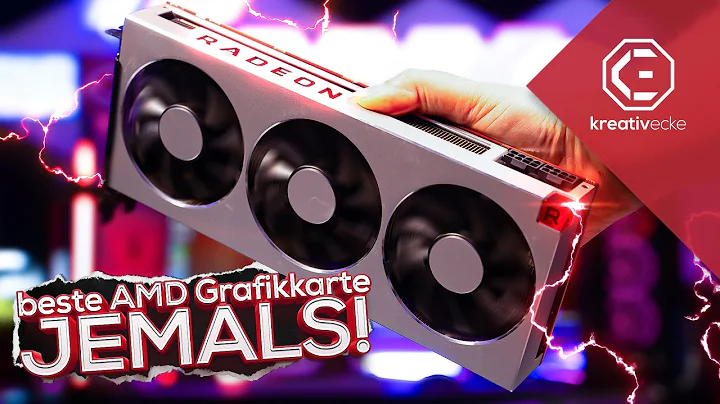Apple's Intel Exodus: What It Means for Macs
Table of Contents
- Introduction to Apple's Rumored Transition
- The Technological Aspect
- Understanding Apple's Current Chip Landscape
- Historical Context: Apple's Chip Transitions
- Analyzing Performance Considerations
- Designing Chips for Different Mac Models
- The Business Perspective
- Financial Implications for Apple
- Negotiating with Intel: A Strategic Move?
- Consumer Implications
- Recalling Past Transitions: Lessons Learned
- Evaluating Consumer Reaction and Loyalty
- Risks of Consumer Dissatisfaction
- Conclusion
Introduction to Apple's Rumored Transition
In recent days, speculation has been rife about Apple's purported shift from Intel chips to ARM-based ones for its Mac lineup. This move, if true, could signal a significant transformation in the tech giant's hardware strategy. Let's delve deeper into the various aspects surrounding this intriguing development.
The Technological Aspect
Understanding Apple's Current Chip Landscape
Apple currently relies on Intel chips across its diverse range of Mac devices, spanning from the lightweight MacBook Air to the powerful iMac Pro. However, the company also designs its own chips, primarily for use in iPhones and iPads, based on the ARM architecture.
Historical Context: Apple's Chip Transitions
The prospect of Apple transitioning between processor architectures is not unprecedented. In 2005, the company made a notable switch from PowerPC chips to Intel, citing the need for a new direction in performance and efficiency.
Analyzing Performance Considerations
While ARM-based chips may suffice for low-power devices like the MacBook Air, questions arise about their suitability for high-performance Macs. The intricate demands of tasks such as video editing and Graphic Design necessitate robust processing capabilities, traditionally provided by Intel's offerings.
Designing Chips for Different Mac Models
If Apple intends to embrace ARM architecture across its entire Mac lineup, including high-end models, it would necessitate the development of a new class of chips tailored specifically for desktop and server usage. However, achieving performance parity with existing Intel chips poses a formidable challenge.
The Business Perspective
Financial Implications for Apple
From a financial standpoint, transitioning to in-house ARM-based chips entails both short-term costs and potential long-term savings. While Apple currently purchases Intel chips, developing and manufacturing its own would incur initial expenses but could lead to reduced overheads over time.
Negotiating with Intel: A Strategic Move?
Speculation arises about whether Apple's rumored transition serves as leverage in renegotiating chip prices with Intel. Given Apple's track Record of shrewd business practices, such a tactic wouldn't be out of character, potentially influencing the dynamics of their supplier relationship.
Consumer Implications
Recalling Past Transitions: Lessons Learned
Reflecting on past transitions, such as the shift from PowerPC to Intel, offers insights into potential consumer reactions and challenges. Any major change in hardware architecture inevitably disrupts the user experience and software compatibility, posing risks to brand loyalty.
Evaluating Consumer Reaction and Loyalty
In a market characterized by diminishing desktop and laptop sales, compelling consumers to adapt to a new chip architecture could strain brand loyalty. The inconvenience and expense of upgrading hardware and software may Prompt some users to explore alternative options.
Risks of Consumer Dissatisfaction
Apple must carefully weigh the risk of alienating its consumer base against the potential benefits of a chip transition. While cost-saving measures and technological advancements may be enticing, the prospect of disgruntled users defecting to rival platforms looms large.
Conclusion
As rumors swirl regarding Apple's alleged transition to ARM-based chips for Macs, the implications span technological, financial, and consumer realms. While the company has a history of bold strategic moves, the success of such a transition hinges on meticulous planning and consideration of consumer sentiment. As the tech landscape continues to evolve, only time will reveal the true extent of Apple's ambitions and the impact on its ecosystem.
Highlights
- Speculation mounts about Apple's transition to ARM-based chips for Macs, signaling a potential paradigm shift in hardware strategy.
- Key considerations include technological feasibility, financial implications, and consumer reaction, with each aspect posing unique challenges and opportunities.
- Apple's history of chip transitions offers valuable insights into the complexities involved in overhauling hardware architecture and navigating consumer sentiment.
FAQ
Q: Will existing Mac software be compatible with ARM-based chips?
A: Compatibility concerns may arise during a transition period, with developers needing to optimize software for the new architecture. However, Apple is likely to provide tools and support to facilitate the migration process.
Q: How might a shift to ARM chips impact Mac performance and battery life?
A: While ARM-based chips excel in power efficiency, their performance capabilities for high-end computing tasks remain uncertain. Apple would need to strike a balance between efficiency and raw processing power to ensure optimal user experience.
Q: What are the potential implications for third-party developers and software ecosystems?
A: Developers may face challenges in adapting existing software to the new architecture, potentially leading to compatibility issues and delays in updates. However, Apple's ecosystem and developer support initiatives could mitigate some of these concerns over time.
 WHY YOU SHOULD CHOOSE TOOLIFY
WHY YOU SHOULD CHOOSE TOOLIFY

























